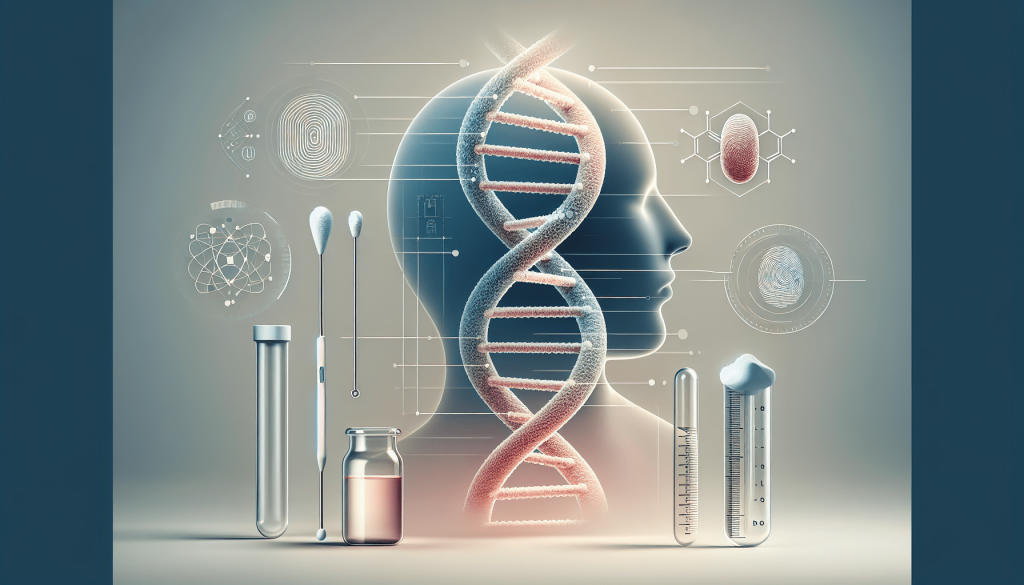Have you ever wondered if a DNA paternity test can be done without drawing blood? This question is more common than you might think, and it’s an important one to address. In today’s world of advanced genetic testing, many people are curious about paternity tests but are apprehensive about needles and blood draws.
Understanding DNA Paternity Tests
Before exploring the different methods available, it’s important to understand what a DNA paternity test involves. A DNA paternity test is a genetic test that compares the DNA of a child with that of a supposed father to determine if there is a biological relationship. The test looks at specific regions of the DNA that are known to vary greatly among people. If the child’s DNA matches the father’s DNA in these regions, the likelihood of paternity is extremely high.
Methods of DNA Collection
Traditionally, paternity tests required blood samples, but technological advancements have introduced alternative methods for collecting DNA that are just as accurate and far less invasive. Here are some common methods:
| Method | Description | Invasiveness |
|---|---|---|
| Blood Sample | Draw blood from the vein using a needle. | High |
| Buccal Swab | Swab the inside of the cheek to collect saliva and cells. | Low |
| Hair Sample | Pluck hairs with the root attached. | Low to Medium |
| Nail Clippings | Clip fingernails or toenails. | Low to Medium |
Buccal Swab: The Preferred Non-Invasive Method
The buccal swab is by far the most popular and user-friendly method for DNA paternity testing. This method collects cells from the inside of your cheek using a simple cotton swab. It’s painless, quick, and easy to do at home.
How to Perform a Buccal Swab
Performing a buccal swab is straightforward and stress-free. Here are the steps:
- Prepare the Kit: Ensure your hands are clean and gather the necessary materials from the DNA paternity test kit.
- Swab Your Cheek: Rub the inside of the cheek with the cotton swab for about 30 seconds to collect the cells.
- Store the Swab: Place the swab in the provided container to avoid contamination.
- Send to Lab: Send the swab to the laboratory for DNA analysis as instructed in the kit.
Advantages of Buccal Swabs
Buccal swabs have several advantages over other methods:
- Non-Invasive: Since there’s no need for needles, this method is completely painless and comfortable.
- Convenient: You can easily collect the sample from the comfort of your home.
- Cost-Effective: Buccal swab kits are generally less expensive than blood test kits.

Alternative Non-Blood Methods
Other than buccal swabs, alternative methods like hair samples and nail clippings can also be used for DNA paternity tests. While not as common as buccal swabs, they offer viable options when traditional methods are not feasible.
Hair Samples
Hair follicles contain DNA, and plucked hair strands can be used for paternity testing. However, it’s important that the hair root is intact since that’s where the DNA resides.
- Collect Hair: Pluck hair strands with the follicle (root) still attached.
- Store Properly: Place them in a clean, dry envelope.
- Send to Lab: Follow the kit’s instructions to send the sample in for analysis.
Nail Clippings
Fingernail and toenail clippings can also provide DNA. Although clipping nails seems simple, collecting a sufficient and uncontaminated sample can be trickier than using a buccal swab.
- Prepare Nails: Wash and dry hands thoroughly.
- Clip Nails: Use clean nail clippers to cut the nails.
- Package Carefully: Place the clippings in a dry, clean envelope.
- Mail it In: Send the sample to the lab as per kit instructions.
Accuracy and Reliability
It’s natural to wonder how these non-blood methods stack up against traditional blood tests in terms of accuracy and reliability. The good news is that you can rely on the results from buccal swabs, hair samples, and nail clippings just as much as blood samples.
Comparing Methods
Here’s a quick comparison of the accuracy and reliability of each method:
| Method | Accuracy | Reliability | Notes |
|---|---|---|---|
| Blood Sample | 99.99% | High | Traditional and well-accepted |
| Buccal Swab | 99.99% | High | Non-invasive and easy |
| Hair Sample | 99.99% | High | Needs intact root |
| Nail Clippings | 99.99% | High | Requires proper collection |
Regardless of the method you choose, make sure to follow all instructions carefully to avoid contamination and ensure the best possible results.

Situational Use Cases
Different scenarios call for different DNA collection methods. For instance, some situations may necessitate a buccal swab, while others might best be handled with hair samples or nail clippings.
Legal Paternity Testing
For legal paternity tests—often used in custody cases or for adding a name to a birth certificate—the chain of custody is crucial. A non-invasive method like a buccal swab is generally preferred and involves a strict protocol to maintain sample integrity.
At-Home Testing
If you’re looking for peace of mind and a test that doesn’t require a legal format, an at-home paternity test is the way to go. Buccal swabs are ideal for this because they’re easy to administer and can be done privately.
Privacy Concerns
In situations where privacy is a concern, such as discreetly testing for paternity, hair samples or nail clippings might be more convenient. However, these must be collected carefully to avoid DNA contamination and must adhere to ethical guidelines and consent requirements.
Challenges and Limitations
While non-invasive paternity tests are highly effective, they come with certain challenges and limitations. Knowing these can help you make an informed decision on which method to choose.
Contamination Risks
Non-invasive samples, particularly buccal swabs, are susceptible to contamination. Be sure to use clean instruments and follow the kit instructions meticulously to avoid any errors.
Sample Sufficiency
Hair and nail samples must be sufficient in quantity and quality. A few strands of hair without the root or insufficient nail clippings could mean an incomplete or inconclusive test.
Legal Acceptance
Some jurisdictions may have specific requirements for paternity testing for legal purposes. Always verify if the non-invasive method you intend to use is accepted in court or other legal bodies.
Selecting a Reliable Testing Company
The accuracy of your DNA paternity test is highly dependent on the quality of the testing laboratory you choose. Here’s a checklist to help you select a reliable company:
Accreditation
Ensure the lab is accredited by credible organizations like the American Association of Blood Banks (AABB) or the College of American Pathologists (CAP). Accreditation ensures the lab follows high standards of quality and accuracy.
Customer Reviews
Search for customer reviews and testimonials. A lab with positive feedback is likely to offer reliable and satisfactory services.
Support Services
Good customer service is essential. Opt for a company that offers support services to help you with the test process and to answer any questions you may have.
Cost and Turnaround Time
Compare costs and check the turnaround time for results. Ensure there are no hidden fees and that the timeline fits your needs.
Conclusion
So, can a DNA paternity test be done without drawing blood? Absolutely! Modern DNA testing offers several non-invasive, accurate, and reliable alternatives to traditional blood tests. Whether you opt for a buccal swab, hair sample, or nail clippings, you can be confident in the results as long as you follow the collection instructions carefully and choose a reputable lab. Now that you have a comprehensive understanding of the methods, advantages, and considerations, you can make an informed decision that best suits your needs and circumstances.
